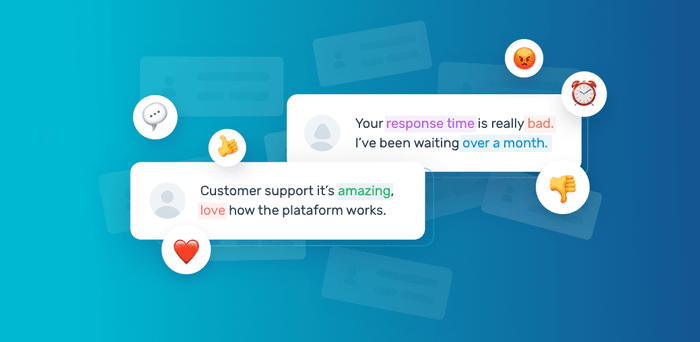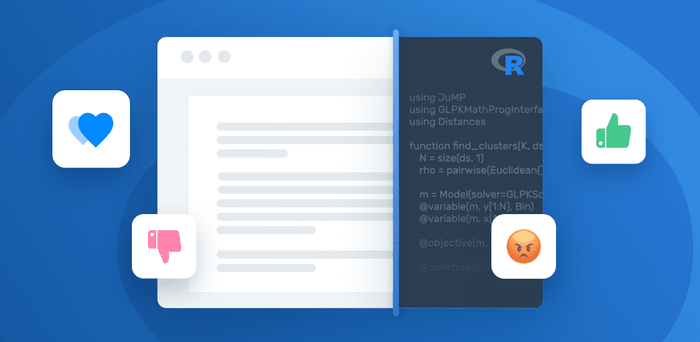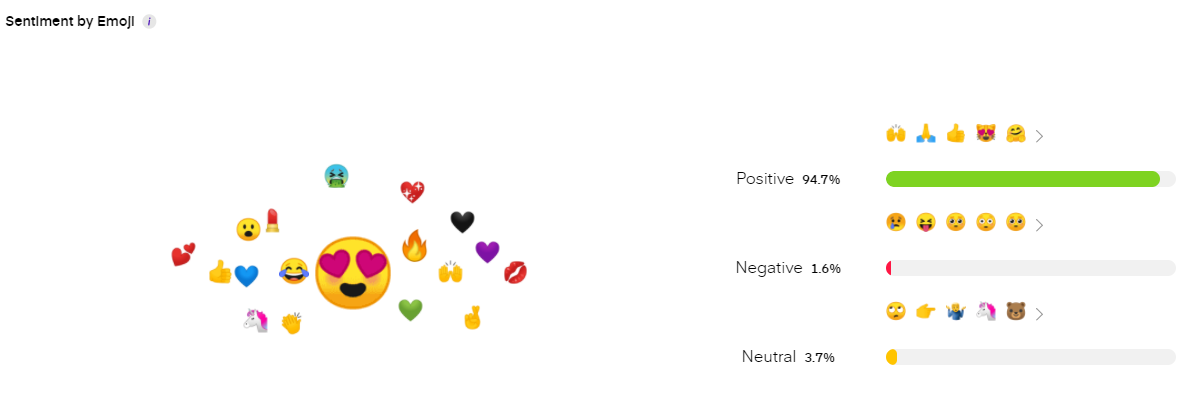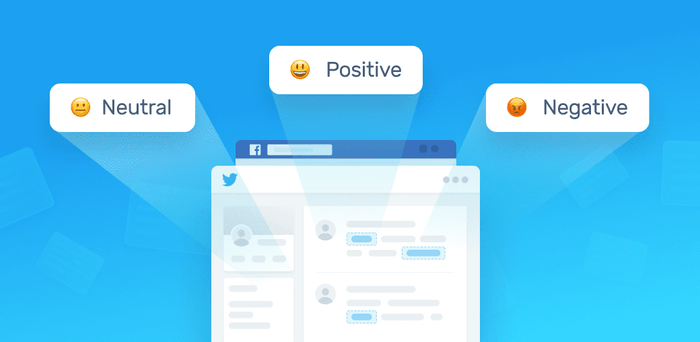Social media platforms have become an integral part of our lives, with millions of users expressing their thoughts, opinions, and emotions daily. Analyzing this vast amount of data can provide valuable insights into the sentiments and feelings of users. In this article, we will explore the concept of sentiment analysis of social media data, shedding light on how businesses and individuals can leverage this powerful tool to gain a competitive edge.
Importance of Sentiment Analysis Of Social Media

The sheer volume of social media data generated every second presents challenges and opportunities for businesses. By harnessing the power of sentiment analysis, organizations can gain valuable insights into consumer preferences, customer satisfaction, and brand reputation. Understanding the sentiment of social media users allows businesses to make informed decisions, tailor their marketing strategies, and respond promptly to customer feedback.
Challenges in Sentiment Analysis of Social Media
While sentiment analysis offers immense potential, it also comes with its fair share of challenges. Some of the common hurdles include:
- Language Ambiguity: Textual data often contains sarcasm, irony, or ambiguous language, making it challenging to accurately determine the sentiment.
- Contextual Understanding: Sentiment analysis algorithms struggle to interpret sentiment accurately without considering the broader context of the conversation.
- Emoticons and Abbreviations: Social media users frequently employ emoticons, abbreviations, and slang, which can be difficult to interpret correctly.
- Data Noise: Social media data is often filled with noise, including spam, irrelevant posts, and unrelated content, which can affect the accuracy of sentiment analysis.
Techniques for Sentiment Analysis

To overcome the challenges in sentiment analysis, various techniques have been developed. These techniques can be broadly classified into three categories: machine-learning approaches, lexicon-based approaches, and hybrid approaches.
Machine Learning Approaches
Machine learning algorithms, such as Naive Bayes, Support Vector Machines (SVM), and Recurrent Neural Networks (RNN), have gained popularity in sentiment analysis. These algorithms learn from labeled data and can accurately classify sentiments based on the patterns they discover.
Lexicon-Based Approaches
Lexicon-based approaches utilize sentiment dictionaries or lexicons containing words with pre-assigned sentiment scores. The sentiment polarity is determined by summing up the scores of words in a piece of text, While lexicon-based approaches are computationally efficient, they may lack contextual understanding.
Hybrid Approaches
Hybrid approaches combine the strengths of machine learning and lexicon-based techniques. These approaches leverage both labeled data and sentiment lexicons to achieve more accurate sentiment classification.
Tools and Libraries for Sentiment Analysis
Several tools and libraries are available to facilitate sentiment analysis tasks. Some popular options include:
- VADER (Valence Aware Dictionary and sEntiment Reasoner): A lexicon-based tool designed explicitly for sentiment analysis of social media data.
- NLTK (Natural Language Toolkit): A Python library that provides various modules and functions for natural language processing tasks, including sentiment analysis.
- Scikit-learn: A machine learning library in Python that offers a wide range of tools for sentiment analysis, including classification algorithms and feature extraction techniques.
- AIM Insights: A powerful sentiment analysis tool developed by AIM Technologies. AIM Insights leverages advanced machine learning algorithms to analyze social media data and extract valuable sentiment insights. It offers real-time monitoring, sentiment visualization, and customizable sentiment scoring.
Sentiment Analysis Use Cases

Sentiment analytics finds applications across various domains, helping businesses and individuals gain valuable insights. Here are a few notable use cases:
Sentiment Analysis in Brand Monitoring
By monitoring social media sentiments related to their brand, companies can assess the overall perception of their products or services. This information helps them identify areas for improvement, track brand reputation, and make data-driven marketing decisions.
Sentiment Analysis in Customer Feedback Analysis
Analyzing customer feedback through sentiment analysis allows businesses to gauge customer satisfaction levels, identify pain points, and address them proactively. It enables companies to provide personalized and tailored solutions, ultimately leading to improved customer experiences.
Sentiment Analysis in Political Analysis
Political campaigns can leverage sentiment analysis to understand public opinion, gauge the sentiment towards different candidates or parties, and fine-tune their strategies accordingly. It provides a way to analyze the effectiveness of their campaign messages and identify areas where they need to improve their public image.
Sentiment Analysis in Market Research
Sentiment analysis plays a vital role in market research, providing valuable insights into consumer preferences, product feedback, and market trends. By analyzing social media data, businesses can uncover emerging trends, and make data-driven decisions to stay ahead of the competition.
Case Study: How Sentiment Analysis Helped a Leading E-Commerce Platform Boost Sales by 40%
A leading e-commerce platform was facing a decrease in customer satisfaction. And facing many negative sentiments, which the customers complain about many different services for the company. Which led to an impact on the reputation of the company and its sales. So the company wanted to:
- Monitor and track the customer’s sentiment across the different social media platforms and review platforms.
- Identify the key pain points that affect customer satisfaction for the company.
- Enhance the marketing campaigns based on the consumer’s sentiment.
- Improve product recommendation by analyzing the customer’s feedback and opinions on it.
Challenges
- Overwhelming Data Volume: With the millions of customer reviews on the different products and the social media activities for the audience. Monitoring the sentiment manually is very difficult.
- Contextual Understanding Issues: The customer’s complaints were indirect, which made it difficult to analyze.
- Influence of Negative Reviews on Sales: The negative reviews about some products led to a decrease in their sales.
- Inconsistent Customer Engagement: The company didn’t build a structured system to respond to the negative reviews.
Solution: Implementing AI-Driven Sentiment Analysis with AIM Insights
The company decided to collaborate with AIM Insights to leverage its sentiment analysis technology with its key features.
- Real-Time Sentiment Tracking: It automatically reviews the customer’s reviews and feedback across the different platforms in real-time.
- Negative Sentiment Alerts: The system was defining any negative sentiment from the customers. And send a notification to customer services, to respond immediately to it.
- Emotion-Based Product Recommendations: The platforms used the customer’s sentiments to personalize the product recommendations.
- Data-Driven Marketing Insights: The marketing team used the data from the customer’s sentiment to build an effective marketing campaign.
Implementation Process
- Data Collection: start with implementing AIM Insights system to the e-commerce platform, social media channels, and customer reviews pages.
- Sentiment Categorization: the system categorizes the sentiment into positive, negative, and neutral with the reasons for the categorizing.
- Proactive Issue Resolution: the company applied a response system to the customers. To address the customer’s issues faster and work on solving them.
- Performance Tracking: the final reports for the customer’s sentiment helped to understand the changes in the customer’s sentiment over time.
Results & Impact
- 40% Increase in Sales: By applying sentiment-driven recommendations the customers were able to find their preferences faster.
- 30% Reduction in Customer Complaints: The real-time tracking of the customer’s complaints and working on solving them faster, led to an increase in negative sentiment.
- Improved Customer Trust & Brand Reputation: The positive sentiment about the brand increased leading to better customer feedback.
- More Effective Marketing Campaigns: The sentiment helped the company to build better marketing campaigns that matched the customer’s interests.
Conclusion
Sentiment analysis of social media data offers a valuable window into the emotions, opinions, and attitudes of users. By leveraging this powerful tool, businesses can gain a competitive edge, understand their customers better, and make informed decisions. However, it is essential to choose the right techniques, tools, and approaches to ensure accurate sentiment classification and actionable insights.
Also, if you’re interested in harnessing the power of sentiment analysis for your business, we at Aim Technologies are here to help. Request a demo from AIM Technologies today and discover how it can transform your social media strategy. Gain valuable insights, monitor brand reputation, and stay one step ahead of the competition.
FAQs
Can sentiment analysis accurately detect sarcasm in social media posts?
- Yes, sentiment analysis algorithms have made significant progress in detecting sarcasm, but it can still be challenging due to the subtleties involved.
Is sentiment analysis limited to text-based data?
- No, sentiment analysis can also be applied to other forms of data, such as audio and video, by converting them into textual transcripts.
How long does it take to perform sentiment analysis on a large volume of social media data?
- The time required depends on factors such as the size of the data, the complexity of the analysis, and the computational resources available. Advanced techniques and distributed processing can significantly reduce the processing time.
Can sentiment analysis be used for real-time monitoring of social media sentiments?
- Yes, real-time sentiment analysis can be applied to monitor social media sentiments, allowing businesses to respond promptly to emerging trends or issues.
Is sentiment analysis suitable for all languages?
- While sentiment analysis techniques have been developed for many languages, the accuracy may vary depending on the availability of training data and linguistic nuances of the specific language.



